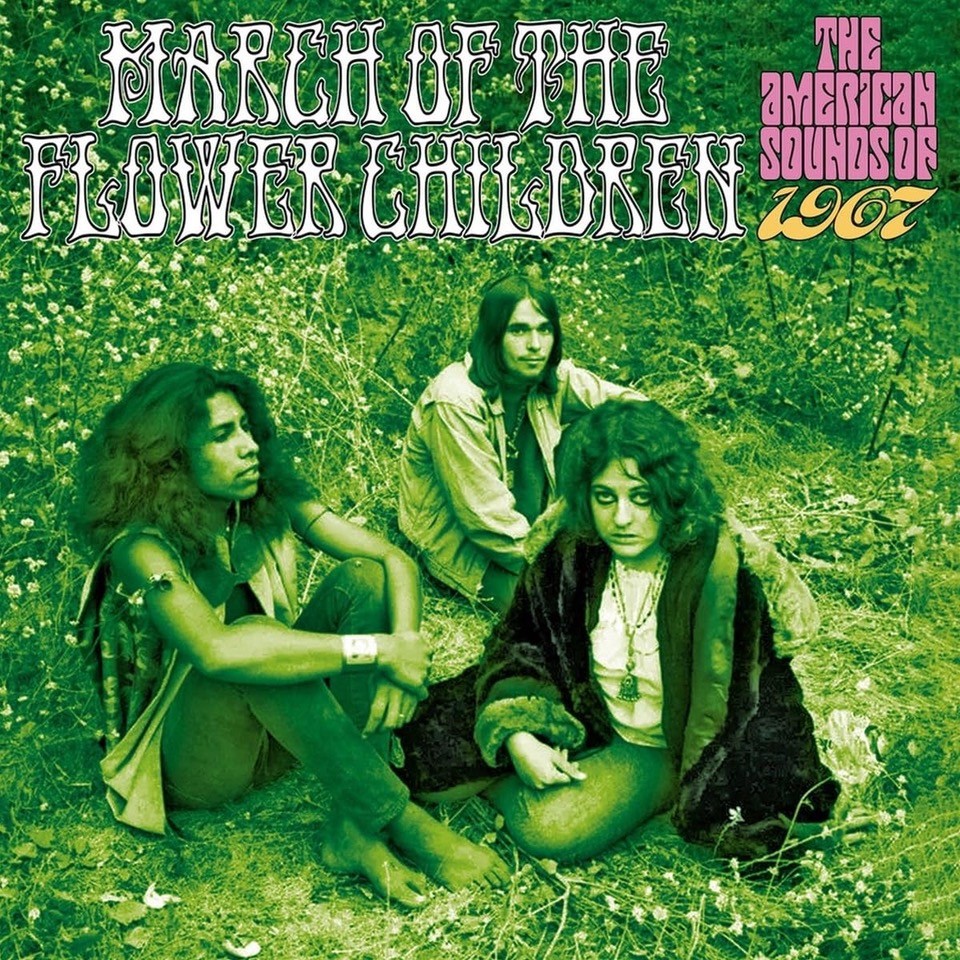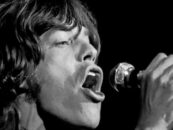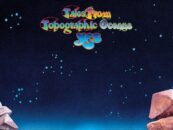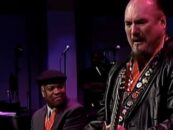 Earlier this year, England’s Grapefruit label issued Too Much Sun Will Burn, the second of two three-CD sets celebrating the British psychedelic sounds of 1967. The anthologies underscored just how adventurous that country’s rock and pop artists were back then, and now, from the same label, comes a companion volume to remind us that just as much was happening at the time on the other side of the Atlantic.
Earlier this year, England’s Grapefruit label issued Too Much Sun Will Burn, the second of two three-CD sets celebrating the British psychedelic sounds of 1967. The anthologies underscored just how adventurous that country’s rock and pop artists were back then, and now, from the same label, comes a companion volume to remind us that just as much was happening at the time on the other side of the Atlantic.
Called March of the Flower Children—The American Sounds of 1967, the new 2023 set features 85 tracks on three CDs and includes an informative and well-illustrated 48-page booklet. As the album’s title suggests, this anthology emphasizes psychedelic sounds and other music that issued from the so-called hippie generation.
It doesn’t stop there, though: the compiler’s goal seems to have been to offer a snapshot of the entire American pop music scene in 1967 and, as a result, this is one of the most diverse anthologies you’re likely to encounter. One minute you’re listening to middle-of-the-road pop confections like Tommy Boyce and Bobby Hart’s “I Wonder What She’s Doing Tonight”; the next, you’re immersed in decidedly off-road excursions such as the Velvet Underground’s “White Light/White Heat,” Captain Beefheart’s “Electricity” or the Mothers of Invention’s “Why Don’t You Do Me Right.” It’s a bit of a bumpy ride but one that includes many fascinating waypoints.
There are one-hit wonders, such as the Peanut Butter Conspiracy (“It’s a Happening Thing”) and The Rose Garden (“Next Plane to London”), as well as total obscurities like the psychedelic bands the Lemon Fog (“Echoes of Time”) and the Doppler Effect (“God Is Alive in Argentina”). Some major groups are represented by hit singles or FM favorites, such as the Rascals with “Groovin’,” the Chambers Brothers with “Time Has Come Today,” the Grateful Dead with “The Golden Road (to Unlimited Devotion)” and the Lovin’ Spoonful with “Six O’clock.” Others are featured with lesser-known material, such as the Monkees, with “She Hangs Out,” the Byrds with “Lady Friend” and the Youngbloods with “Merry-Go-Round.” There are also artists with roots earlier in the decade who seem motivated by a desire to jump on the hippie bandwagon, including Tommy Roe (“Paisley Dreams”), the Everly Brothers (“Mary Jane”) and Jan and Dean (“Love and Hate”).
Quite a few of the tracks stand the test of time, including many by artists that garner little attention today, such as the West Coast Pop Art Experimental Band (“Transparent Day”), Tim Rose (“Morning Dew”) and the Kaleidoscope (“Egyptian Gardens”). There are also superlative numbers from acts that have found loyal audiences but nevertheless should have loomed much larger in the 1960s than they did, such as Tim Buckley (“Morning Glory”), Love (“¡Que Vida!”), Moby Grape (“Fall on You”) and the Blues Project (“No Time Like the Right Time”).
Some of the tracks have wound up in the dustbin of history for good reason. Sonny Bono’s overwrought “Pammie’s on a Bummer” is itself a bummer, for example. Equally inane is the sitar-spiced “Aries” from The Zodiac: Cosmic Sounds, an album distinguished only by its early use of the Moog synthesizer.
These are exceptions in a mostly excellent setlist, however. If you lived through the late ’60s, this album will likely spark fond memories and probably also expose you to some great rarities that passed you by back then. If you grew up later, on the other hand, this is as good a place as any to start exploring all that you missed in the musically important year of 1967.






2 Comments so far
Jump into a conversationi love this emailer/site but i’m ready to unsubscribe because constant pop-up ads make it difficult to read and impossible to enjoy. i would be happy to pay for a subscription if it would circumvent you need to inset ads. please advise.
Thanks for the feedback, Dr. Bob. We’ve let our ad network know.